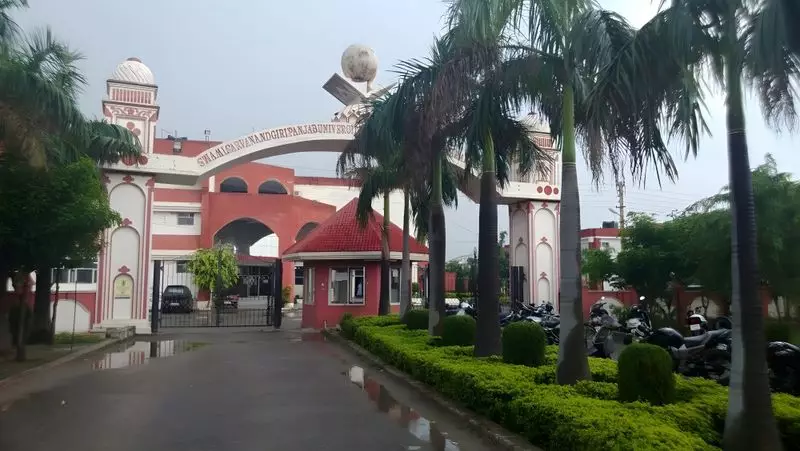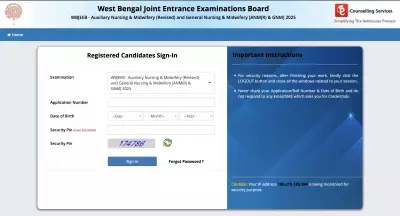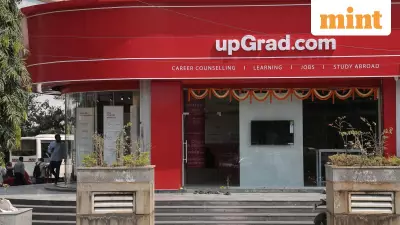
While student union activists created significant noise and demonstrations outside the main gates, the academic environment within Panjab University's Regional Campus in Jalandhar remained remarkably undisturbed on Tuesday. The campus continued its normal operations despite the brewing storm of protest just beyond its boundaries.
Peaceful Protest Outside, Business as Usual Inside
The scene at the Panjab University Regional Campus in Jalandhar presented a study in contrasts. Outside the main entrance, members of various student unions gathered to voice their demands for immediate student council elections. The protesters raised slogans and displayed banners, creating a visible presence that could not be ignored.
However, once inside the campus gates, the atmosphere transformed completely. Academic activities proceeded without interruption, with classes running according to their regular schedules. Students moved between lecture halls and laboratories, focused on their studies rather than the demonstrations occurring at the periphery of their educational environment.
The campus administration had implemented appropriate measures to ensure that the protest would not disrupt the primary educational mission of the institution. Security personnel maintained watchful presence while adopting a restrained approach that respected the students' right to peaceful assembly.
The Core Demands of Student Activists
The protesting student unions articulated clear objectives for their demonstration. Their primary demand centered on the immediate conduction of student council elections, which they argued were long overdue. The activists maintained that democratic representation through elected student bodies is essential for properly addressing campus issues.
Beyond the election demand, protesters also highlighted several other concerns affecting the student community. These included improvements to campus infrastructure, enhanced library facilities, and better transportation services for students commuting to the regional centre.
Representatives from multiple student organizations participated in the demonstration, showing unified support for their shared demands. Despite the vocal nature of their protest, participants largely maintained discipline and avoided any confrontational behavior with campus authorities.
Administration's Balanced Response
The campus administration demonstrated a nuanced approach to handling the protest situation. While ensuring that academic activities continued uninterrupted within the campus, officials also acknowledged the right of students to express their concerns peacefully.
University authorities have indicated that they are reviewing the demands put forward by the student unions. The complex process of organizing campus elections requires careful planning and coordination with the main Panjab University administration in Chandigarh.
The regional campus director and other administrative officials monitored the situation closely throughout the day. Their priority remained maintaining the delicate balance between upholding campus秩序 and respecting democratic expression.
The successful containment of the protest to areas outside the main academic zones demonstrated the effectiveness of the administration's planning. Students pursuing their education experienced minimal disruption to their daily routines despite the significant protest activity at their doorstep.
Broader Implications for Campus Democracy
This incident at Panjab University's Jalandhar Regional Centre highlights the ongoing tension between campus administration and student representation across Indian universities. The demand for student union elections reflects deeper questions about student participation in institutional governance.
Student unions have historically played crucial roles in Indian higher education, providing platforms for leadership development and advocacy. However, administrative concerns about maintaining campus order and academic focus often create friction in the election process.
The peaceful nature of Tuesday's protest, coupled with the administration's restrained response, suggests that constructive dialogue may be possible. Both sides appear to recognize the importance of maintaining the campus's primary educational mission while addressing legitimate student concerns.
As the situation develops, the Panjab University administration faces the challenge of responding to student demands while ensuring that academic activities remain the central focus of the regional campus. The outcome of this particular protest could set important precedents for how similar situations are handled at other regional centers of the university.
The Jalandhar campus of Panjab University has demonstrated that it is possible for protest and education to coexist when both sides exercise responsibility and respect for institutional processes. The coming days will reveal whether this temporary calm leads to meaningful progress on the issues raised by student representatives.





